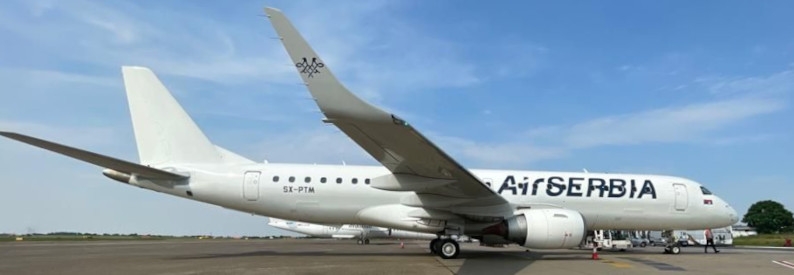Air Serbia Gains Russian Overflight Rights for Shanghai Route

Air Serbia has received approval to operate scheduled flights between Belgrade and Shanghai through Russian airspace, a move that strengthens the airline’s position in long-haul connectivity between Europe and China. The decision, confirmed by Russia’s Federal Air Transport Agency, follows a formal request by Serbia’s Civil Aviation Authority to access the Trans-Siberian corridor. Shanghai has now been added to the bilateral air services agreement between Serbia and Russia.
Air Serbia began flying to Shanghai Pudong International Airport in January 2025, replacing its previous Tianjin service. The route operates twice weekly with Airbus A330-200 aircraft and currently avoids Russian airspace, instead flying over Bulgaria, Georgia, Azerbaijan, and Kazakhstan. This detour results in flight times exceeding 10 hours and 30 minutes. With access to Russian airspace now secured, the airline may be able to shorten flight times and reduce operational costs, though it has not yet confirmed any routing changes.
As Serbia is not a member of the European Union, Air Serbia is exempt from the EU-imposed sanctions that prohibit member carriers from using Russian airspace. The airline has maintained regular service to Russia throughout the conflict in Ukraine, with daily flights to Moscow Sheremetyevo, six weekly flights to St. Petersburg, and twice-weekly operations to both Kazan and Sochi, according to OAG Schedules Analyser.
The new approval positions Air Serbia to better compete with Chinese carriers that benefit from unrestricted access to Russian skies. Airlines like China Eastern are rapidly expanding their European networks, adding destinations and increasing frequencies as demand for China-Europe travel rebounds. China Eastern is launching four weekly flights between Shanghai and Barcelona starting September 26, joining Air China on the route and intensifying competition. Additional launches by China Eastern include services to Geneva, Milan Malpensa, and Copenhagen, as well as new routes from Xi’an to Istanbul and Nanjing to Paris.
China Eastern’s summer 2025 schedule includes over 2.27 million two-way seats between mainland China and Europe, reflecting a 25.6 percent increase year-on-year. Across the entire China-Europe corridor (excluding Russia), total seat capacity is forecast to reach approximately 10.5 million, with Chinese carriers contributing 83 percent of that volume.
The development could provide Air Serbia with operational advantages and a platform to expand its footprint in China. It remains to be seen whether the carrier will adjust its Shanghai routing or explore new destinations in the Chinese market now that it has overflight access. Industry observers note that the timing is favorable, given the rising competition and strategic importance of efficient east-west connectivity in post-pandemic air travel recovery.
Related News : https://airguide.info/?s=Air+Serbia
